I think one of our new favorite places to wake up is in Oliver Lee state Park. We thought the sunset the night before had been gorgeous – the San Andres Mountains forming the picture perfect blue silhouette against the orange sky. After a short bike ride around camp and a quick hike up into Dog Canyon, Henry was determined to make a fire. The rest of us were too busy setting up our camp and making dinner, so he walked to the camp host, used his own five dollars to buy a bundle of fire wood, hauled it back to our fire pit, set it up and got it going. We were glad he did, because the temps dropped fast while we enjoyed that sunset, and Henry’s fire kept us warm as we watched the landscape turn into a postcard of New Mexico.
The next morning it was even colder when we woke up before sunrise. After watching the sun light up first the mountains across the valley, then advance in a stark line towards us, and finally slice through Dog Canyon and stream over the mountains behind us, we packed up and headed to White Sands National Park. One of the most spectacular sunrises we’ve seen!
It was a short drive to another world. At least that’s what it seemed like when we pulled into White Sands. At the entrance we purchased two used disc sleds and the obligatory orange cube of sled wax and got copious tips about the best sledding area in the gypsum dunes (Alakalai Flats), how to and how not to wax our sleds, and how we should follow old sled tracks for peak performance. We also learned that the dunes are not sand but instead gypsum, a mineral made of calcium and sulfates. The basin containing the dunes used to be covered by a sea containing these minerals. When the area dried and the sea evaporated, the minerals were left behind and over a long, long time broke down into tiny grains and formed into the dunes. We also learned that gypsum is used for a LOT of different things. So many things it’s kind of amazing there are still dunes left. Gypsum is used in toothpaste! Here’s a short list of some other uses: fake snow in movies, plaster in casts, additives in foods like ice cream and tofu, for brewing beer, creating drywall, binding tennis court clay, in sidewalk chalk, as hardener in cement. It goes on and on!
The pavement ended not far past the entrance, and we bumped along between towering snow white dunes for 8 miles until we reached the flats. We hopped out of the RV with our sleds and wax and sun screened up for the first time since last summer. We climbed our first dune, waxed our sleds like the nice lady said, and tried a few runs. It was slow at first (especially for Dad, who mostly just sank), but after a few attempts we learned that face first was the way to go. We tried a few dunes, one of which the boys nicknamed Rattlesnake Ridge. Some of us are scared of snakes. Luckily, we didn’t see any snakes, but wandering around we found evidence of several different sorts of creatures: maybe lizard prints, beetle nests, and snake trails.
Who knows how long we walked around those dunes, because it was tough to get any sense of perspective. The dunes cover over 275 square miles and are framed by the San Andres and Sacramento Mountains. After probably a couple hours we realized we were parched and ready for shade and our next adventure. We boarded the Funseeker (still needing a first name, we think) and made our way toward Gila National Forest and our next camp, Gila Hot Springs.



























































